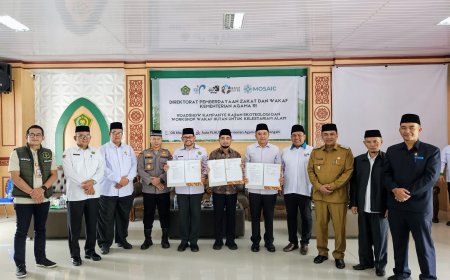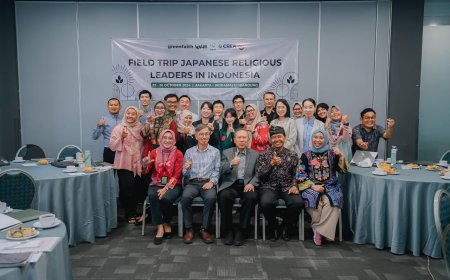Khalifah Mission in the Red Zone
The study recommended the planting of hard vegetation (trees) with strong roots that correspond to the physical conditions of the region in Pamijahan.
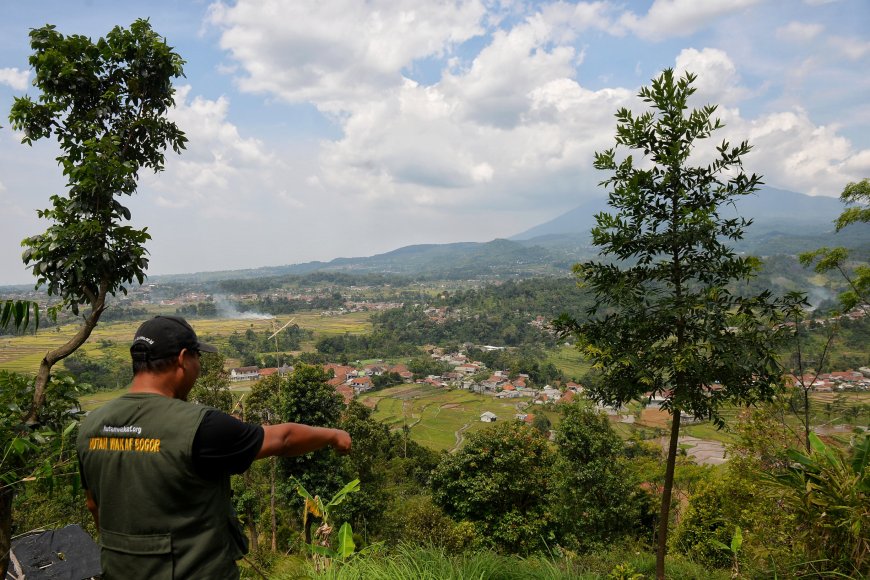
Rain did not stop in Cibunian Village, Pamijahan District, Bogor Regency, last November. It sounded harsh with the rushing of the river in the village located at the foot of the Halimun Salak Mountain.
In that wet day, i pulled over to an uninhabited bamboo grove in Bogor's Waqf 1 Forest. After climbing up, two new middle-aged oldmen were busy clearing the ground left by the landslide on June 2022. They also rushed down to prepare the saung. The Waqf 1 forest looks more like a park than a forest. Beneath the sloping ground of 1,500 square meters, there are parking facilities for vehicles. The cobbled path is also made comfortable with handrails. The road became a means for visitors to walk across the saung and to the lodge which could be used to shelter.
In addition, there are two fish ponds in which the water flows. Different types of fruit trees and a variety of flowers also grow there. In saung, the carpet of rice fields is gorgeous view after tiring drive of about two hours from Bogor City with motorcycle.
After waiting, a young man on a motorcycle came up. Edih, his name. One of the volunteers of the Bogor Waqf Forest often fosters the residents who live around the area of the Waqf forest. Edih also told us earlier that the saung served as a coffee shop that would serve the visitors of the waqf forest. It's just that the tank has been left empty since the disaster. “Now residents are still traumatized by the landslide last June,” Edih said.
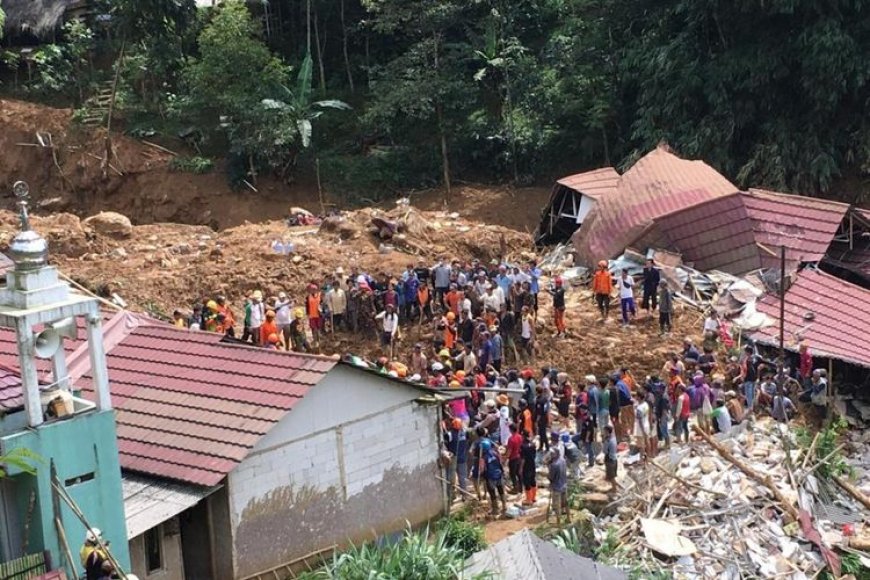
On June 22, 2022, a large landslide hit Cibunian Village and its surroundings. The National Agency for Disaster Management noted that three of the victims were killed while one was missing. One of the victims was the wife of a forest waqf member who happened to be at home when the disaster occurred. As many as 395 residents had to evacuate. Landslides accompanied by flooding also caused hundreds of homes to be damaged. Village infrastructure such as bridges are broken up whereas roads are closed.
The district of Pamijahan, the administrative area where Cibunian Village is located does belong to the red zone. The Geographical Journal of Gea Vol 19 in 2019 recorded that the district with 15 villages had an area prone to landslides of 10,624 hectares (76.20 percent).
Soil type, land use dominated by plantations, rice fields and settlements, to steep slope conditions are some of the factors that predispose the region to disasters. The high rainfall which averages out to 363.166 mm per year is an additional factor. Not surprisingly, the study recommended the planting of hard vegetation (trees) with strong roots that correspond to the physical conditions of the region in Pamijahan.
As a part of Pamijahan District where become red zone, Cibunian Village has also the status of very prone to landslides. The initiation of the waqf forest program in Cibunian offered the solution for the problem.
Khalifah Muhammad Ali, founder of the Bogor Waqf Forest Foundation, revealed that he built the waqf forest after publishing a scientific article in a sharia economics journal portal.
Khalifah who completed his studies in forestry and sharia economics IPB University combined ecological and economic concepts in the form of waqf forests. The fruit of his thoughts jolted many readers. One of them, a philanthropist who owned a plot of land in Pamijahan.“My wife's friend. He had land in Cibunian and then asked me to manage it as a waqf forest,” Khalifah said.
An area of 1,500 meters of land was liberated. Khalifah then applied the idea based on the waqf forest by acting as the nazir or the manager of the waqf's assets. For Khalifah, the concept of waqf became a solution to the problem of climate change due to deforestation that has not stopped.
In simple terms, Khalifah explains that a waqf forest is a forest built on the land of the waqf. Forests previously owned by individuals or institutions are purchased with waqf funds to then be appropriated.
Its ownership also passed from private property (wakif) to that of The God (Allah SWT). These assets are then managed for the benefit of mauquf alaik, the beneficiary of the management of the waqf. In the context of a waqf forest, these beneficiaries are defined as being of general interest.
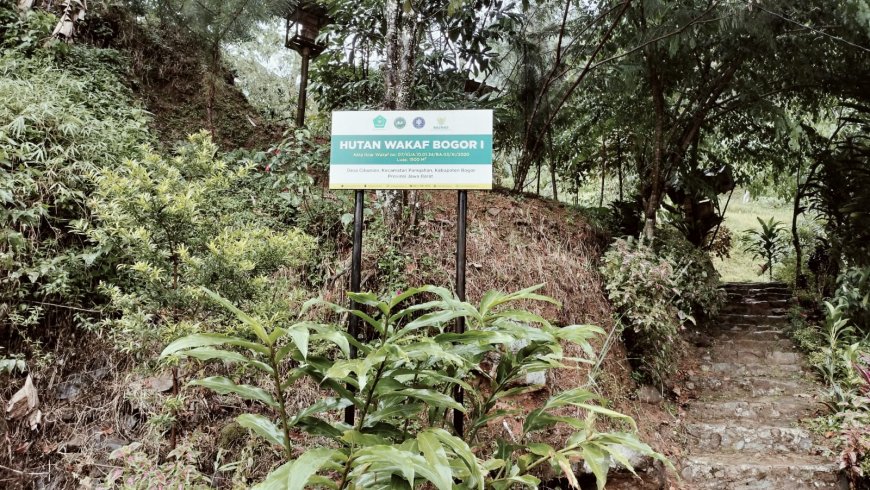
Khalifah affirmed that the waqf should not be sold, inherited and endowed. The assigned waqf cannot be changed in function either. If a land is pledged to be a forest, it must forever be managed as a forest.
Only, Khalifah revealed, the waqf could increase the usefulness of the land in the waqf pledge other than for forests. “It can be for educational means or other useful activities. Of course without disturbing its main ecological function,” he explains.
After the first land was liberated, Khalifah who acted as the nazir (manager of the waqf) moved through the Bogor Waqf Forest Foundation. He also raised further funds to increase the waqf land that was converted into forests. Until now, there are three zones and five areas of land that have been successfully liberated and managed into forests. If counted, he said, the area of five waqaf forests in Cibunian village reaches about one hectare.
In other parts of Europe, the concept of mini-forests managed by the foundation has actually been implemented, known as Small Forest Patches (SFP) or small forest patches. Although somewhat miniature, SFP is capable of providing real benefits to humans living around it.
As reported by Springer.com, in addition to being a reservoir of biodiversity, SFP can affect the water cycle and contribute to supplying high quality water to agriculture. Globally, SFPs are important carbon sinks and are involved in nutrient cycles, thus playing a role in climate change mitigation. In the context of a disaster, SFP becomes a solution to withstand floods and winds.
The concept of SFP seems similar when looking at how the Bogor Waqf Forest is managed. Forests close to residents and farmland can bring real benefits to the lives of local residents. Khalifah explained that the waqf forest has three roles: ecology, economy and education. Ecological functions are carried out more than just land acquisition for forests.
He exemplified, the types of trees planted in the waqf forest were considered cook-cook. The banyan tree was planted in view of the residents who needed spring water for daily purposes. Its strong roots can grip rocks and soil, so it can serve as a natural spring foundation.
In addition, the seeds of the banyan tree can be fodder for the birds. “This is what the Messenger of Allah said, including alms, and he said, “No Muslim grows crops or farms, and birds or men or animals eat the fruits, unless they are considered alms to him” (HR Al Bukhari).
The forest also has a beneficial economic function for local residents. Through ecotourism, the waqaf forest provides accommodation that visitors can rent. Not only that, saung is also used as a stall as a micro-business place for local residents. “It has been able to provide income for citizens,” he said.
Guiding services are also prepared for visitors who want to enjoy the beauty of the village. “They can track the forest and enjoy the hot springs,” he explained.
Another economic activity initiated by the waqaf forest is the production of trigona honey to sheep herding. According to the Caliph, the management of this economic activity is in cooperation with several stakeholders such as the Ministry of Religious Affairs and Baznas.
For educational functions, Khalifah explained, the waqf forest routinely hosts a study every Friday to provide religious and environmental insights to residents.
Not only that, they also form a building group consisting of fathers, mothers and young children. For the latter group, they were made a disaster response group. “What we are doing can hopefully be an example anywhere,” he said. (red)


